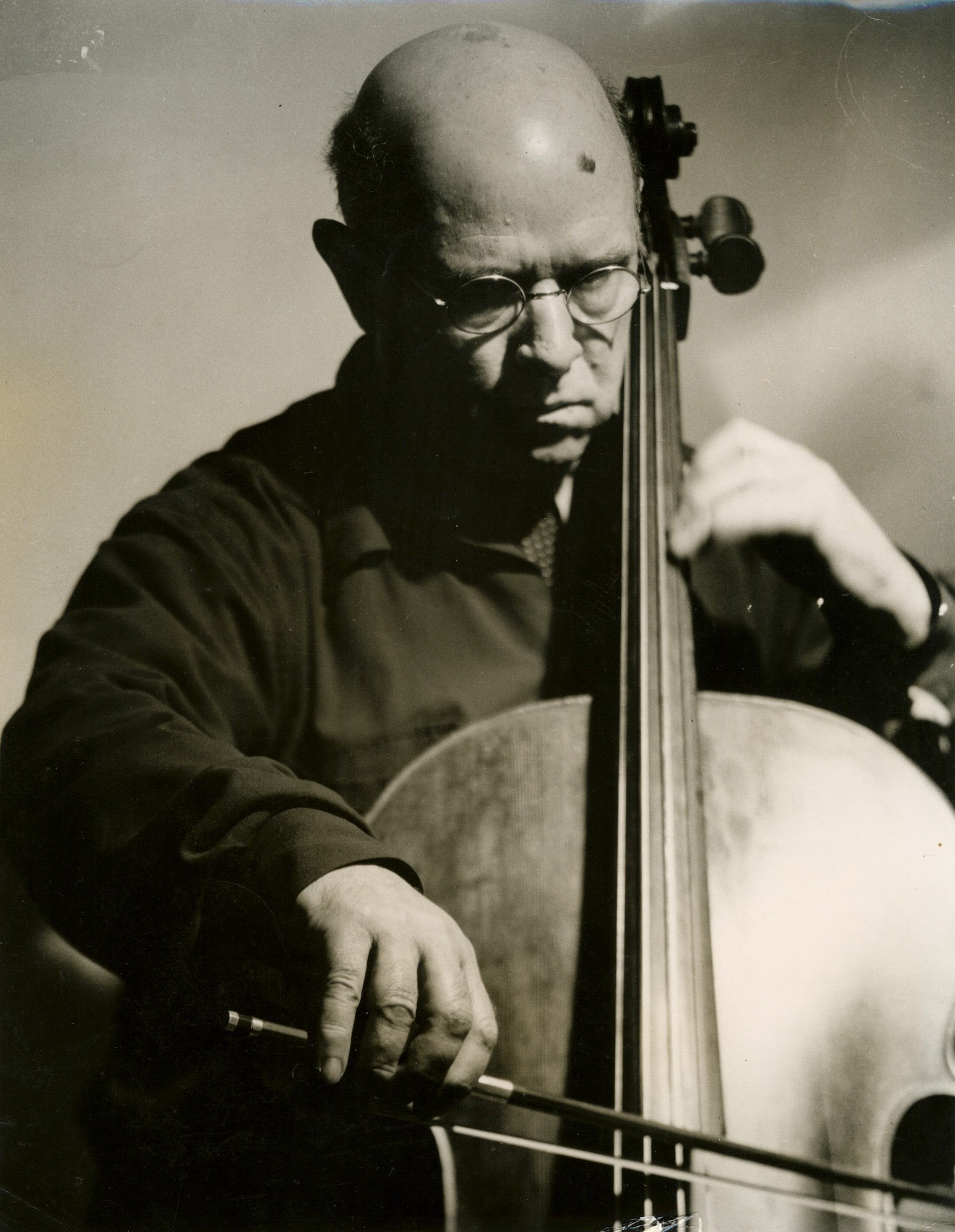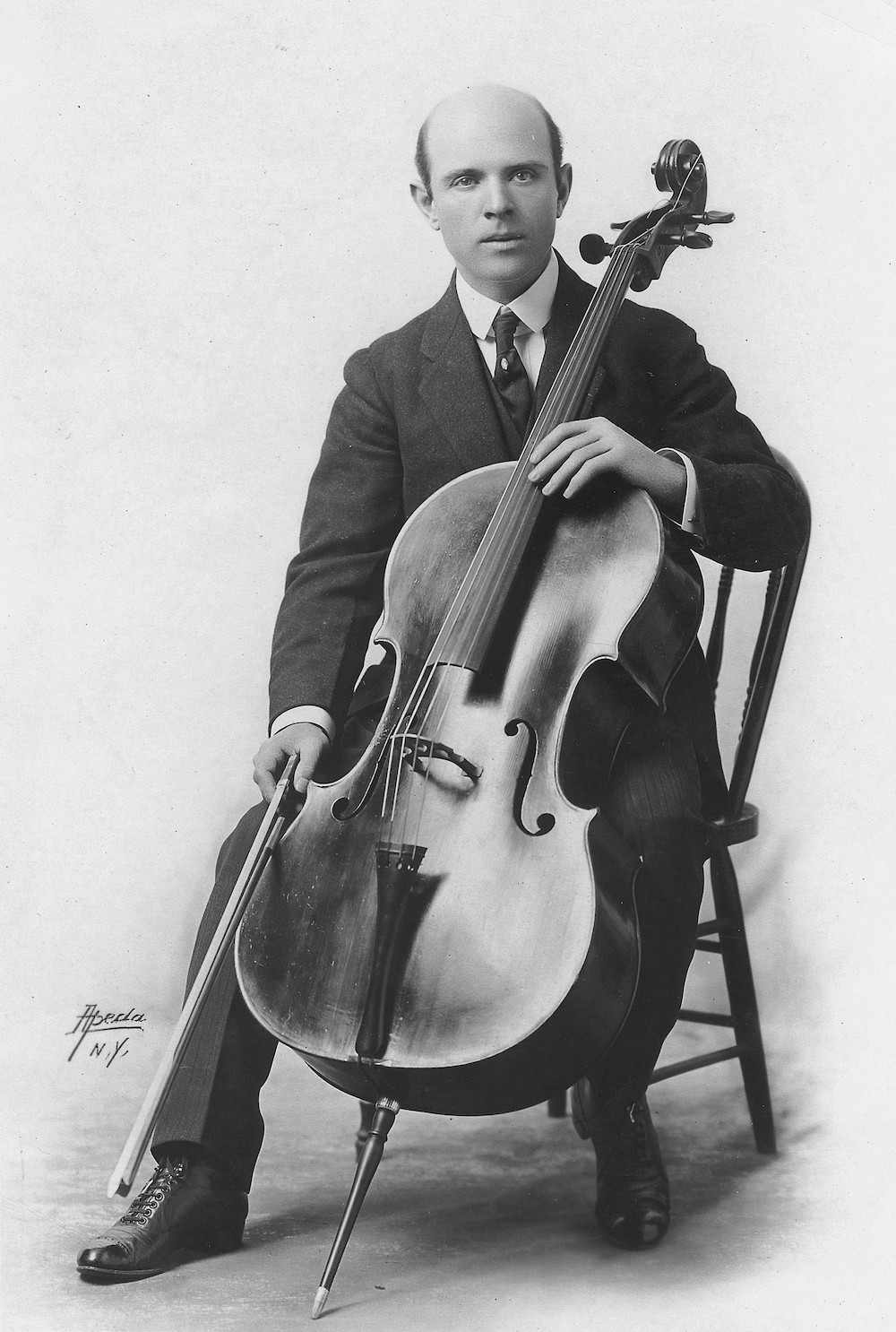pau casals
Pau Casals was born in El Vendrell on December 29, 1876. He demonstrated his musical ability from an early age, and during his long career as a cellist and composer he was admired and recognized internationally.
He founded the Pau Casals Orchestra in Barcelona in 1920 and the Associació Obrera de Concerts (Workers’ Concert Association) in 1925 to bring good music to all social classes. Following the Civil War of 1936-39, he was forced to leave his friends, family and the house of Sant Salvador, which he loved so much, and went into exile in Prada de Conflent, France, where he began a voluntary musical silence to denounce Franco’s repression and demand the return of freedoms to his country. Faced with the refusal to return to the stage, his musician friends managed to organize the Prada Festivals, which took place from 1950 to 1966, and which brought together the most renowned concert-goers. In 1957 he moved to Puerto Rico, and since then the Casals Festival has been held there.
One of his most significant creations was the music of the poem “El Pessebre”, written by Joan Alavedra. Additionally, his masterful interpretation of the Catalan popular piece “El Cant dels Ocells” led to this simple song becoming a message of world-wide peace and fellowship. This message of peace was reinforced by his speech at the United Nations, where he asserted his status as a Catalan in front of representatives of all countries. In 1963, US President Kennedy awarded him the Medal of Freedom for his contribution to the fight for world peace, of which he has become a point of reference.
Pau Casals died in Puerto Rico on October 22, 1973, and his remains were moved to the Vendrell Cemetery in 1979.
His connection to El Vendrell was unwavering, despite the adverse circumstances he had to live through. As a young man, he played the baroque organ of the parish church (his father was its organist) and, thanks to his initiative, it was repaired in 1929. On the other hand, his interest in manifestations of popular culture is known, especially in the “castells” (Catalan human towers), of which he was a follower, and his contribution to the making of the costumes of the Ball de Diables del Vendrell (“Devils’ dance” fireworks processions).
These are the reasons why the town of El Vendrell loves and admires the figure of the maestro Pau Casals and pays tribute to him by showing visitors the most important milestones of his life and work, curated in his House in El Vendrell and in the Museum Vil·la Casals, the summer residence he had built on the beach of Sant Salvador, where you can see objects and artifacts of his personal and musical life, as well as works of art, including the sculptures of the welcoming Mediterranean garden overlooking the sea.
In front of the Vil·la Casals, there is the Pau Casals Auditorium, built to fulfill one of the essential wishes of the maestro: to bring music and culture to everyone. The building is the work of the architect Jordi Bonet, and is integrated into the space of the J.S. Bach square.
Exhibitions of all kinds are organized in the lobby, and the audition room hosts musical activity throughout the year. The Pau Casals International Music Festival, which brings together the best performers in the world every summer, with special attention paid to the cello, is the most prestigious exponent of the Auditorium’s plentiful musical and pedagogical programming, which accommodates not only classical music but also popular music, jazz and all quality music, consistent with Pau Casals’ wishes.

